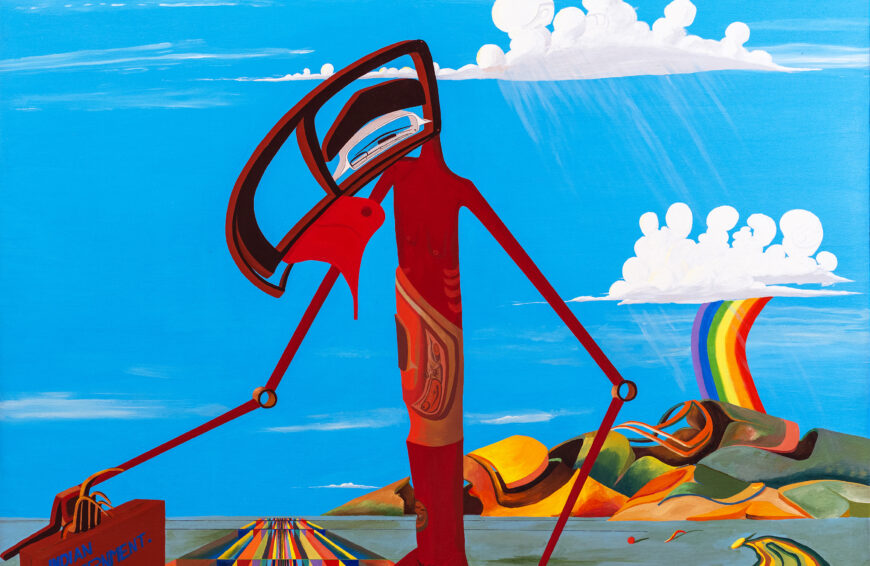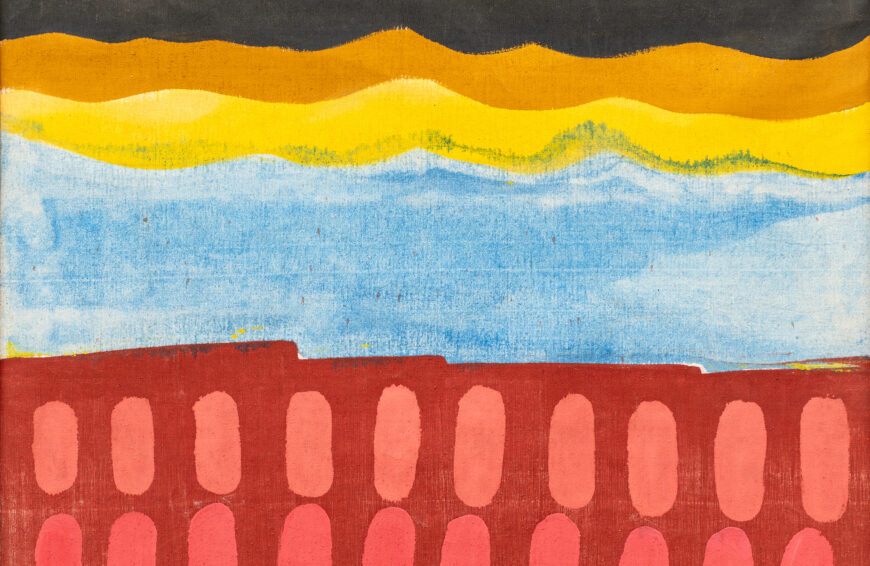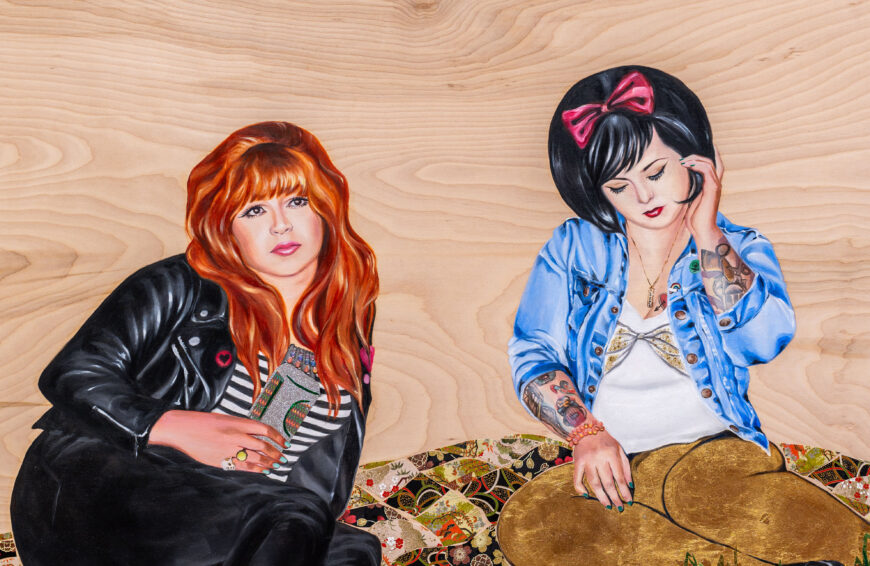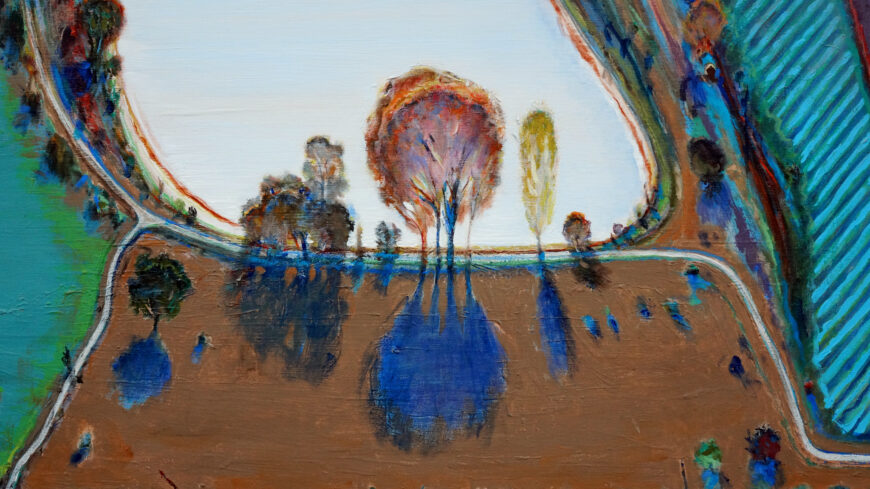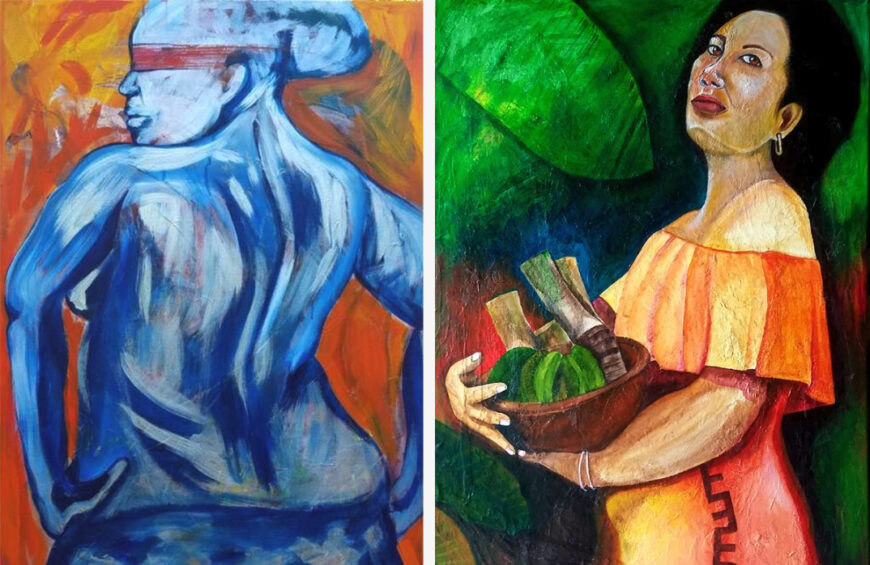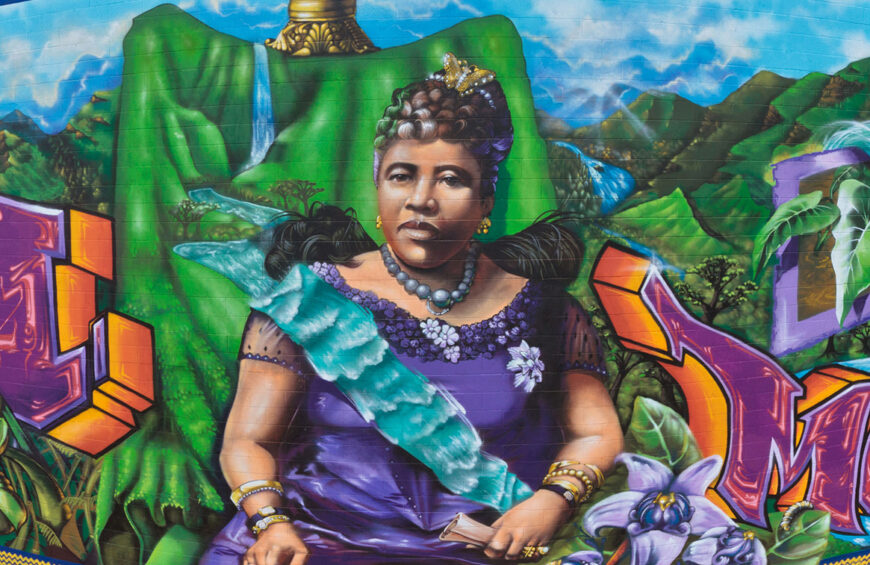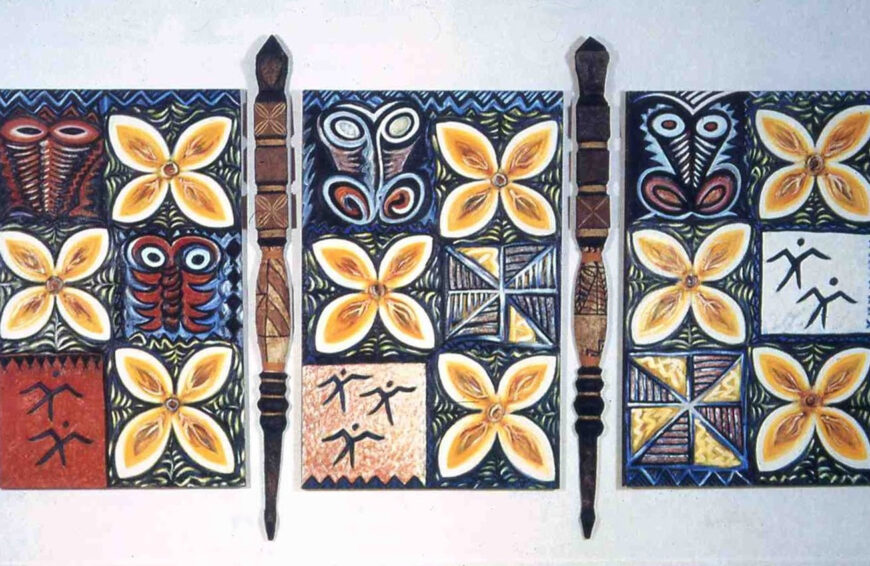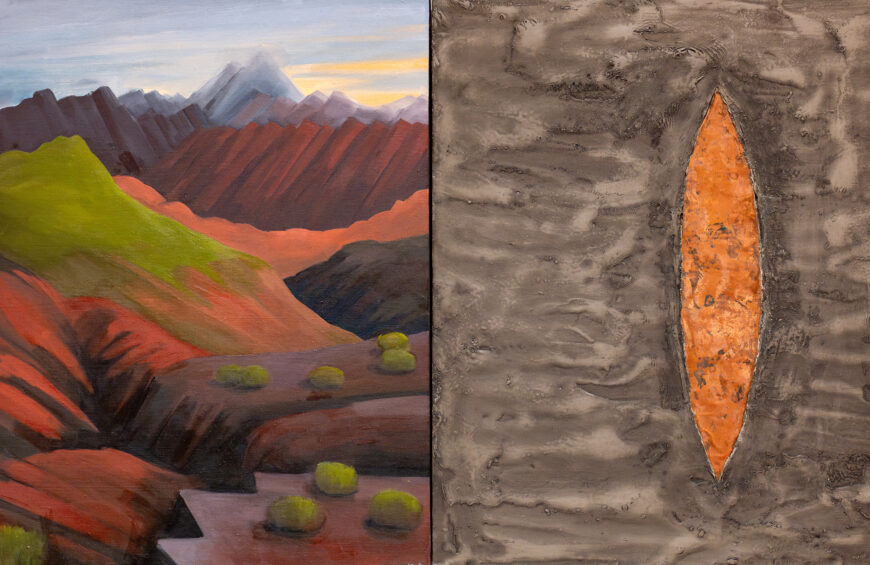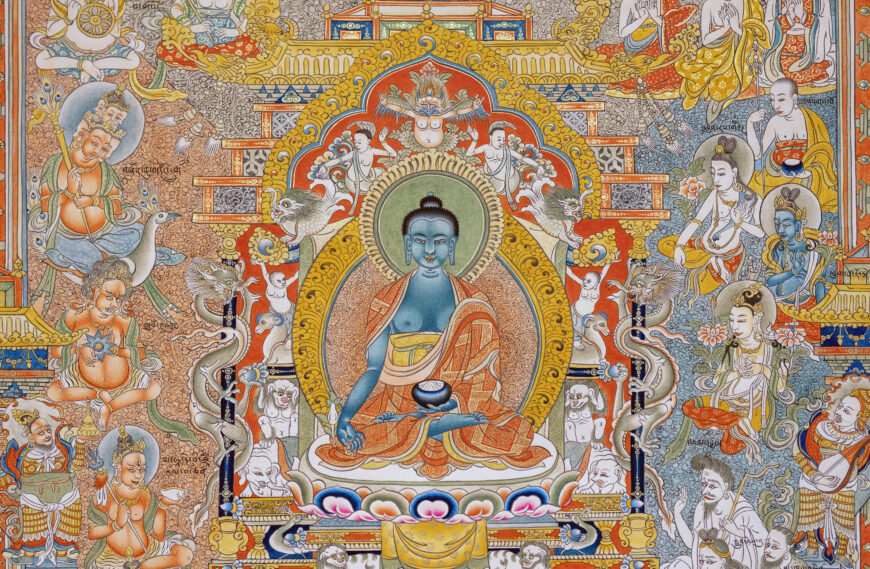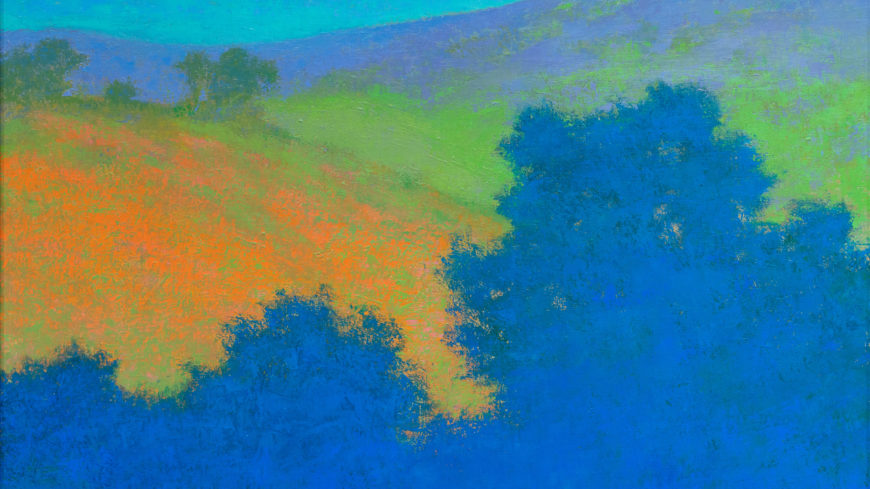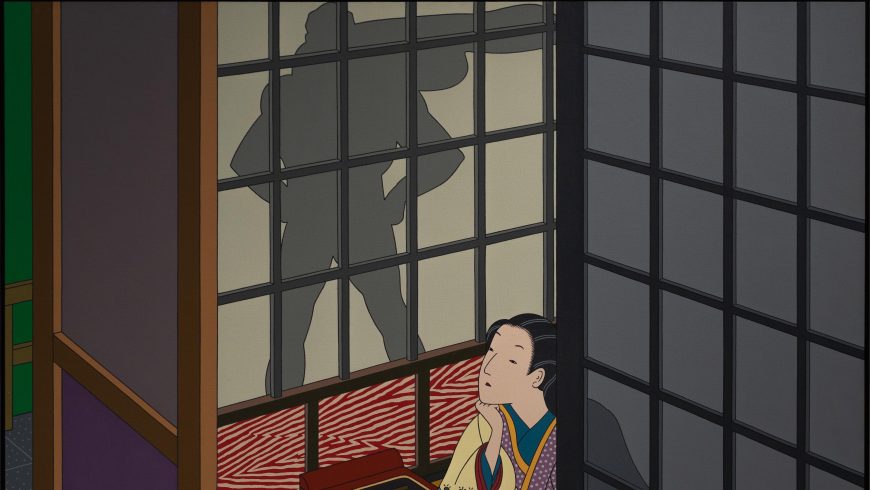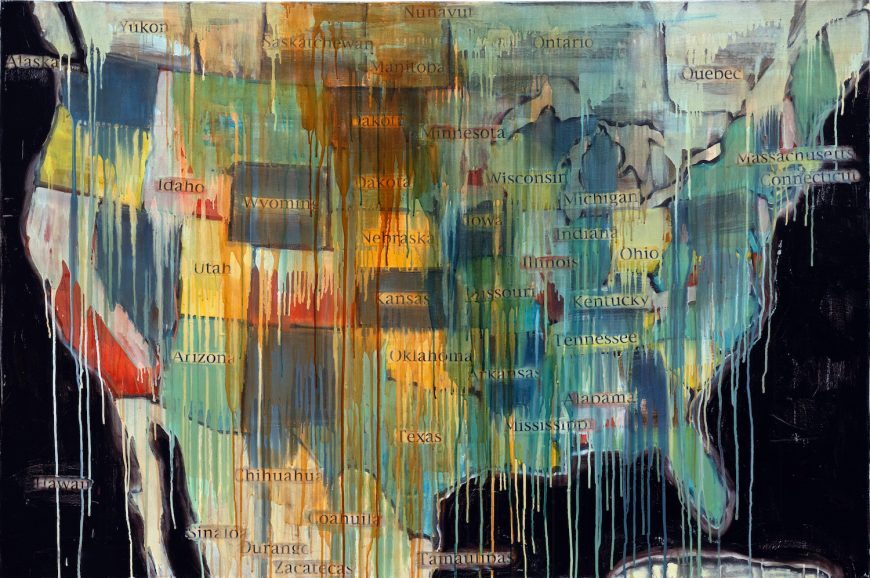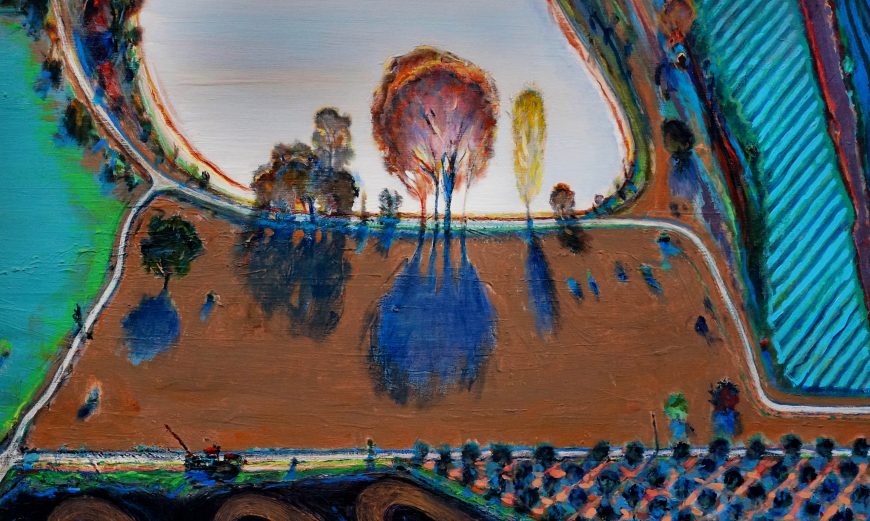By art21. Shown working on two site-specific paintings for the San Francisco Museum of Modern Art (SFMOMA), Julie Mehretu recontextualizes the history of American landscape painting by merging its sublime imagery with the harsh realities not depicted. “What does it mean to paint a landscape and be an artist in this political moment?” she asks from the decommissioned Harlem church used as her studio for the project.
Referencing the ways that landscapes have been politicized through historical events—from the violent expansion of the American West, colonialism, war, and abolition, through to more recent race riots and social protests—Mehretu began by combining photographs from these events with nineteenth-century landscape paintings. Abstracting and digitizing the blended forms, she printed the resulting images on two monumental canvases, each spanning more than eight hundred square feet. Over these underpaintings, Mehretu adds gestural, calligraphic brush strokes before screen printing an additional, complicating layer of pixelated images.
Collaborator Jason Moran, a composer and jazz pianist, joins Mehretu in the studio to create a musical arrangement inspired by her improvisational process of markings and erasure. Through their respective practices, the two artists create new visual and auditory languages in the hopes of processing the complex history that brought us to our present moment. As Mehretu explains, the paintings become “visual neologisms,” that combine the work and inventions of past artists, “to address when language isn’t enough.”
The paintings, titled “HOWL, eon (I, II)” (2017), are currently on view in the SFMOMA atrium. Julie Mehretu’s paintings and drawings refer to elements of mapping and architecture, achieving a calligraphic complexity that resembles turbulent atmospheres and dense social networks. Architectural renderings and aerial views of urban grids enter the work as fragments, losing their real-world specificity and challenging narrow geographic and cultural readings. The paintings’ wax-like surfaces—built up over weeks and months in thin translucent layers—have a luminous warmth and spatial depth, with formal qualities of light and space made all the more complex by Mehretu’s delicate depictions of fire, explosions, and perspectives in both two and three dimensions. Her works engage the history of nonobjective art—from Constructivism to Futurism—posing contemporary questions about the relationship between utopian impulses and abstraction.


